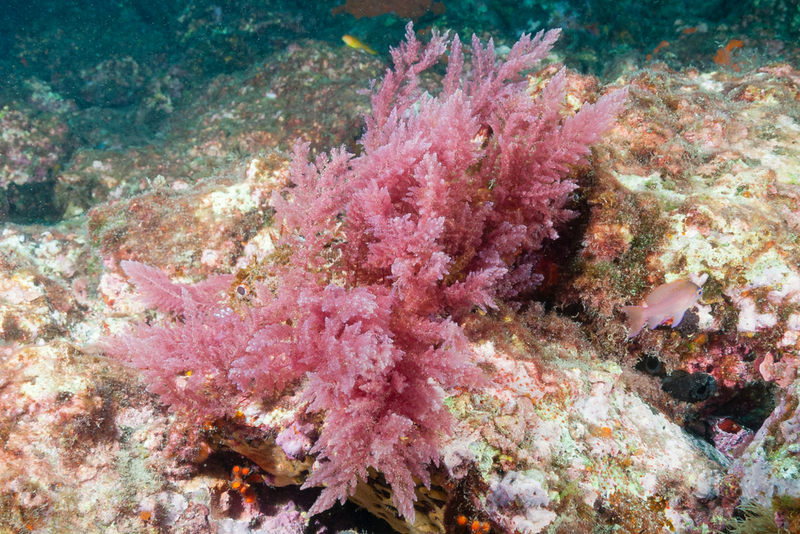Compounds derived from marine red algae could be used as a coating material on the sanitary items and also for the production of antiviral drugs to fight COVID-19, suggests a study by scientists at Reliance Industries Ltd.
For our comprehensive coverage and latest updates on COVID-19 click here.

The researchers said that products derived from natural sources, such as flora and fauna, bacteria, fungi, and higher plants have great potential to fight diseases caused by viruses.
Polysaccharides -- such as agar, alginates, fucoidan, carrageenan, rhamnan sulfate -- are such natural compounds having tremendous antiviral potential.
In this study titled "Marine Red Alga Porphyridium sp. as a Source of Sulfated Polysaccharides (SPs) for Combating Against COVID-19", the researchers examined anti-viral potential of sulfated polysaccharides from marine algae in context of currently available data.
"As evident from the various analysis reports worldwide on antiviral activity of SPs (sulfated polysaccharides) from Porphyridium (red microalgae) supported with the immunity boosting property, we can say that this microalga can be a versatile player in the treatment of many viral diseases," said the study published in "Preprints", a multidisciplinary preprint platform for science and technology research.
"The role of carrageenan from different biological sources including Porphyridium in controlling coronaviral respiratory infection is commendable.
"The recent pandemic of COVID-19 and its spreading rate are serious problems throughout the world. We can also attempt Porphyridium EPS (exopolysaccharides) along with carrageenan and sulfated polysaccharides in clinical trial studies to reduce its proliferation. Since there are multiple molecules in exopolysaccharides of Porphyridium, this organism can make a positive difference in the treatment of COVID-19," said the study co-authored by Vinod Nagle, Yogesh Pawar, Mahadev Gaikwad, and Santanu Dasgupta.
Polysaccharides originate from plants (e.g. plant cell walls, tree exudates, seeds, tuber/roots) or animal sources (hyaluronan, chitin, chondroitin sulfate). Algae also contain large amounts of polysaccharides as structural, mucopolysaccharide and storage polysaccharide. Seaweeds (macroalgae) are main sources of these polysaccharides. Increasing market demand of natural polysaccharides for the food, cosmetics, and pharmaceutical industries cannot be met by currently available conventional sources like red and brown macroalgae. Moreover, traditionally these polysaccharides are harvested from natural resources and are dependent on environmental mercy.
An attractive alternative can be red microalgae (Porphyridium), which can be cultivated round the year in open and close cultivation systems, offering a vast range of potential products, the study pointed out.
This news story is picked from a reputed newswire and is minimally edited by M3 India staff. M3 India does not hold any view for or against it.